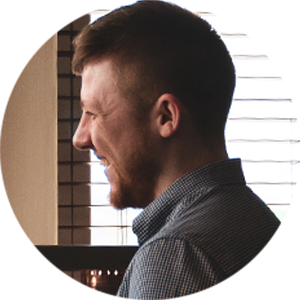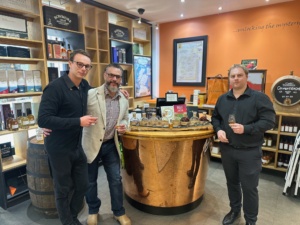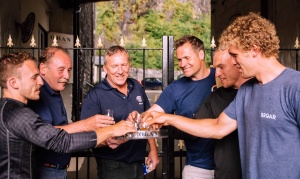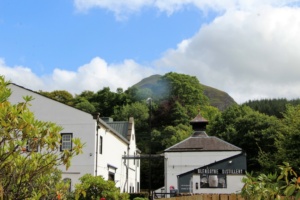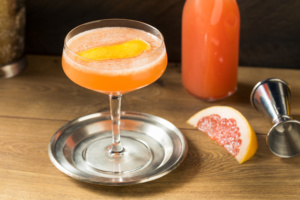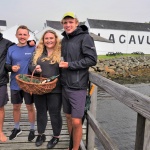My Craft - Loch Lomond Master Distiller Michael Henry
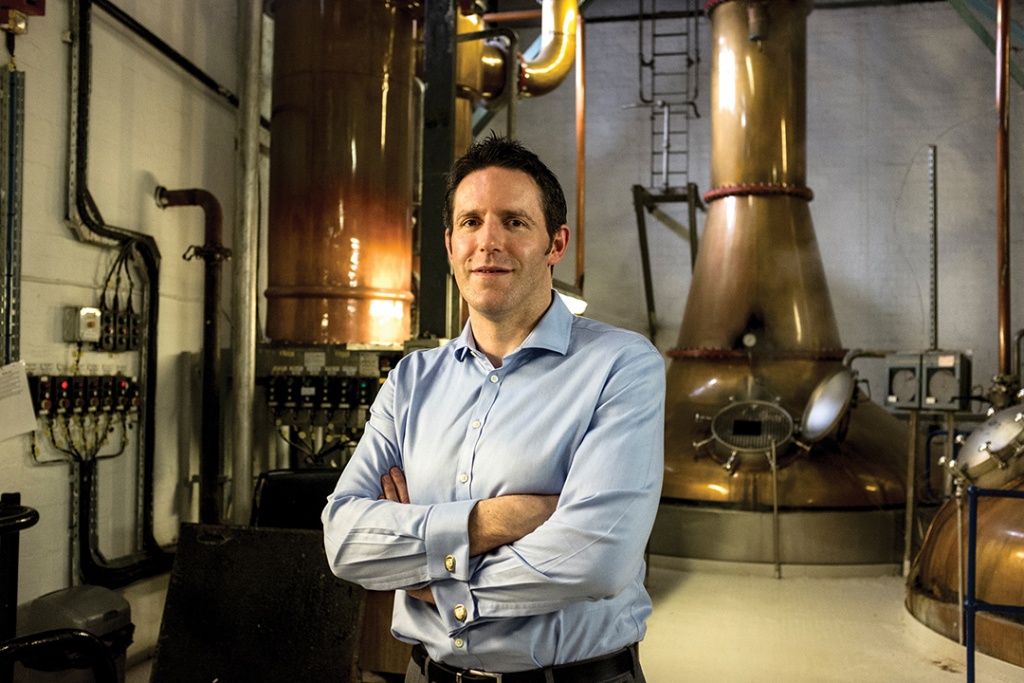
Tell us about a ‘day in the life’ of Master Blender at Loch Lomond Distillery.
You start off your day looking at how the operations are going, what vattings we have and what dispatches are going out. That’s the not so glamorous bit.
Afternoons are for nosing, product development work and cask selection – the afternoon is for looking at the spirit.
One of the things that sets you apart here is that you make a lot of different styles of malt and grain whisky all on site…
When the Bulloch family bought the distillery in 1987 they already had the High Commissioner band and the bottling plant in Catrine, and having the stills here planted the seed about having a fully independent distillery. Other distillers would’ve been swapping spirit to get different flavour profiles, but they started looking how to develop all those flavour profiles you need for a blend, in house.
When did you come into the mix, so to speak?
I arrived in 2007, so I’ve been here for 10 years. I started at Bushmills Distillery – I was a student there and was sponsored by them to do the Brewing and Distilling degree at Herriot-Watt University. I’ve always been in beer or whisky – when I graduated I worked for the Bass Brewery in Belfast, then I moved from there to Tennents in Glasgow, then to Loch Lomond.
What attracted you to work at Loch Lomond Distillery?
It was probably that idea of self-determination and having everything in your control. When I worked at Bass I was a team leader looking after the brewing, so I kind of ran the brewing operation myself.
There are plus sides and downsides to that. The big plus side is that if you want to do something then it’s on your shoulders, so go ahead and do it. And having the kind of mindset fitted in well at Loch Lomond, where it was a smaller company, again independently minded. You could influence the whole process, so that’s what really attracted me here.
Did you take any technical influence or inspiration from your time in brewing when you returned to whisky?
It definitely helped my understanding of mashing, yeast, and flavour generation during fermentation. It’s a big thing that individual brewers will have different, specific type of yeast for every type of beer that they produce. It’s the complete opposite to distillers, so that level of detail comes from my brewing experience. I started looking at fermentation times, and the effect of the longer fermentation times on spirit quality.
What’s the result of using those different yeasts and varying fermentation times?
For the malt, we use one type of yeast for the straight neck pot stills, then a different type of yeast for the traditional swan neck pots – they accentuate different flavours associated with the still.
How have you used that attention to detail to shape what you’re doing here?
When you talk about distilling and craft, other distillers have used that craft, that knowledge gained over 200 years, to produce one spirit style consistently. They’re recognised for it and it supports their brand. Whereas we’ve flipped that on its head – we’ve used that same distilling knowledge to produce differentiation and up to 9 different spirit styles, enabling us to create different expressions like our three 12 Year Olds, Inchmurrin, Loch Lomond and the new Inchmoan 12, which all have their own special flavour characteristics.
Tell us more about the blending element of your craft…
When I started at Loch Lomond the focus was on 3-Year Old spirit, so I was all for High Commissioner and bulk blends. What that’s allowed me to do is get a good understanding of the flavour profile of our stock and what the different flavours are at different ages of the spirits. That really helps when somebody comes though with a brief for a new product – I can have something in my head very quickly.
Has the nature of the distillery changed since you started?
The way Loch Lomond has developed has been a reflection of the whisky industry over the last 40-50 years. It was built to supply malts for blends: we had the grain distillery built here so we could independently supply a full blend. In the last 10 years the focus has shifted; people are looking more for single malts, and our shift has been to using the malt stocks and different spirit styles we have here to create a malt-focused business.
What about the single grain spirit you create here?
We have our conventional grain stills, and then we have our continuous still in the malt distillery – because it’s a continuous still we have to classify the spirit as a single grain, but it’s actually made from 100% malted barley. What the continuous still allows us to do is to control the flavour profile: we have eight plates where you can take the spirit off, and where we take the spirit off gives it a different character.
Our grain distillery is the bedrock of our blended product, combined with the different cut points on the continuous still and the added character we get from that, then mixing it with the eight or nine different single malt styles we produce between two different malt stills. And then we’ve got our own cooperage, so we have full control over all the different casks and how we treat them. It all means we can have the product exactly how we wish it.
What’s the part of the process like, selecting your different casks?
Ours was one of the first cooperages to put in the cask rejuvenation machine. When you’re focused on a shorter turn around you’ve only got three years to get the flavour out of the wood, so you need to make sure it’s high quality because you’re forcing it to do a lot of work. We also started investing in our bourbon cask supply.
The way we run the malt stills reduces the ‘off flavours’ we get at distillation, and pack in as much flavour as possible, originally to be drunk at three years old. Once you have that you’re into maturation, but you’re not having to rely on the barrel to take away ‘off notes’; you’re just relying on the wood to give you a positive character. Now it’s about taking care that the wood doesn’t over-balance the spirit quality.
How did you become a Master Blender?
I was home brewing when I was doing my A-Levels and that’s when you’re picking university courses, so that was one of the things that led me to Brewing and Distilling.
There seems to be a growing trend for crossover between brewers and distillers. Is there anything like that on the horizon for you?
I want us to carry on looking at the different yeasts as, for me, there’s a lot more scope for flavour generation there, right at the point of distillation. When I was at Herriot-Watt my final year project was on temperature and distilling yeast and I think, for Loch Lomond, it’s in tune with our perspective on driving spirit development from distillation, rather than just looking at casks and finishing.
Is there any one product you’ve worked on that you’re particularly proud of?
Probably the Loch Lomond Signature Blend, although the malts get more attention. Because we have the grain distillery here, and the cooperage, a lot of our history is tied into blends. It gives the best representation of the distillery, because it has little of everything we do in it.
Is the Signature Blend also a representation of what you do, as an individual?
With our history tied so much to blends, I think you need to remember where you come from! The Signature Blend (which goes through a Solera cask process) has given me the chance to make the best blend we can put together, so that’s probably the most satisfying work for me, in terms of all the different spirits and casks used.
Did you have any preconceptions of Loch Lomond before joining the company?
I didn’t have any preconceptions as I didn’t know about it! The first time I’d heard ‘Loch Lomond Distillery’ was when I saw the job advertised in The Herald. So that was me coming in with a clean slate.
You’ve been instrumental in forming the new liquid and brand. Have you had a say in what it looks like and how it’s presented?
Yes, in terms of the story, the make-up, non-chill filtered, alcohol strength etc. We’ll invite the marketing team down to taste a new product and we might all agree, but we might not; it’s my job to see past personal preference and explain why a whisky is balanced a certain way.
Have you always been this impartial, even back in the days of home brewing?
I’ve always been kind of impartial, because you have to be. I’ve probably spent the last 20 years doing technical tasting – so objective flavour assessment, rather than tasting and looking for what I want.
Would you ever be completely selfish and make something that is just exactly what you, personally, want to drink?
Probably not, because it changes all the time! I’d like to get a product out there made using wine yeast, because I love those aspects of flavour.
When I was in beer, brewing in the UK for big companies was going downhill. It makes it really clear in your head that, however much you love a product, if it’s not selling it’s not going to keep you in a job, so you need to have some commercial focus in what you’re doing.
Have you learned to be more commercially minded the longer you’ve been in the drinks industry?
It was driven home very early on with the six years I was with Bass and Tennent’s.
There’s not been so much pressure like that coming into Scotch, because Scotch has been going the opposite way – it’s been a boom time. Still, no matter what you’re making you need to respect your customers. They’re paying their money that they’ve worked for to buy something you’re making, it’s not like they’re buying something like food that they need to have. They’re choosing to buy your products as something to enjoy, so you do need to think about them.
Do you have a favourite whisky to drink of all the ones you make?
I like the Inchmurrin 12 and the Loch Lomond 12 Year Old. I kind of flip between the two. Although with our new Inchmoan 12 release I may have a new favourite!
Is there any one whisky you wish you’d come up with?
Again, it changes all the time, but there are whiskies that I love drinking. The likes of Red Breast 12 Year Old and Power’s – I love Irish pot still whiskies. After that it’s maybe be Michter’s and Woodford Reserve, they’re two bourbons that I love drinking too.
Do you ever drink whisky in a mixer or in a cocktail?
I don’t, personally. When I’m putting a whisky together – say the Loch Lomond 12 – it might be made up of four different spirits. I’m used to picking an attribute of the spirt that I want to enhance or amplify, and I think with cocktails you’re doing that kind of thing. But instead of using different spirit styles you’re using whisky and bitters and mixers and other spirits. It’s a similar concept. If people enjoy our whiskies mixed in cocktails, it’s another way of appreciating what we do!
The original feature was published in the Summer 2017 edition of Whiskeria, delivered to the door of W Club subscribers and also free with any Whisky Shop purchase in store or online. Learn more here
Now, let's take a look at the latest Loch Lomond release...
Introducing Loch Lomond 19 Year Old Royal Port Rush
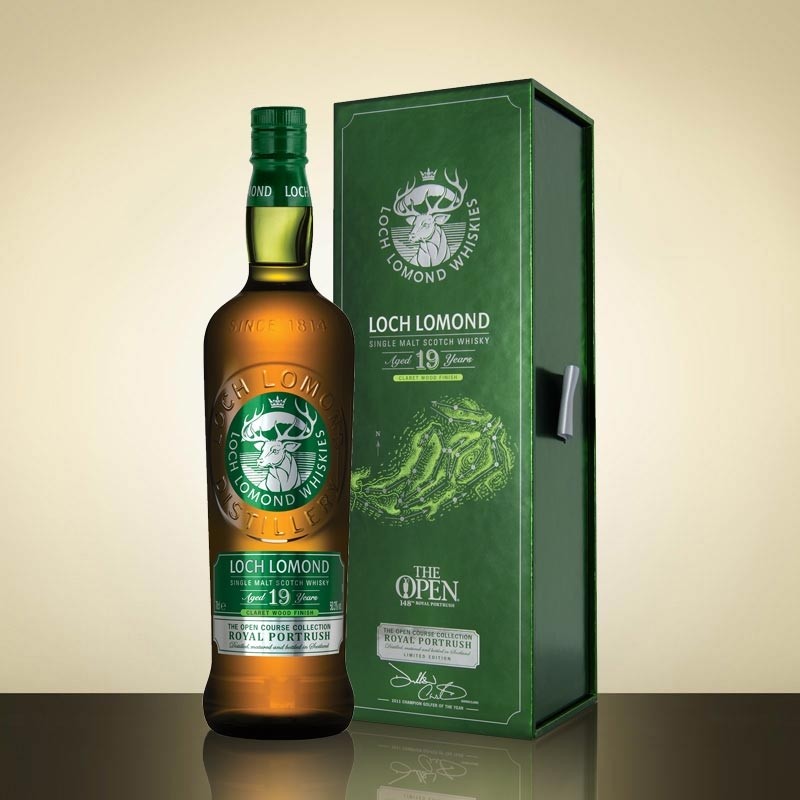
Loch Lomond 19 Year Old Royal Portrush
£160.00 - Buy Now
Part of The Open Course Collection from Loch Lomond Whiskies, the official Spirit of the Open, this Highland single malt has been matured in American oak casks from the distillery's own cooperage for at least 19 years. This expression was created in collaboration with 2011 Open Champion golfer, Darren Clarke, whose signature it bears.
Bottled at 50.3% abv, this expression has the characteristic fruitiness of Loch Lomond Whiskies, with a rich mouth-feel and sweet notes of honey and tropical fruits.
The original feature was published in the Summer 2017 edition of Whiskeria, delivered to the door of W Club subscribers and also free with any Whisky Shop purchase in store or online. Learn more here.
 4.7/5 with 10,000+ reviews
4.7/5 with 10,000+ reviews